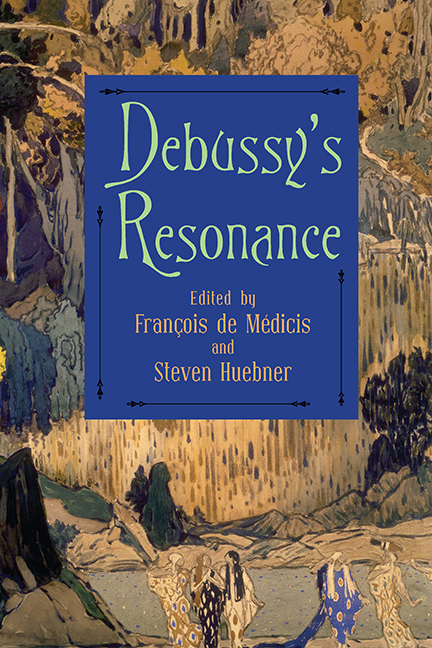Book contents
- Frontmatter
- Contents
- List of Illustrations
- Acknowledgments
- List of Abbreviations
- Introduction
- Part One Historiographical and Editorial Issues
- 1 Debussy Fifty Years Later: Has the Barrel Run Dry?
- 2 The Œuvres complètes de Claude Debussy Thirty Years On
- 3 The Kunkelmann Manuscripts: New Sources for Early Mélodies by Claude Debussy
- 4 “Paysage sentimental”: “Si doux, si triste, si dormant …”
- Part Two Style and Genre
- Part Three History and Hermeneutics
- Part Four Theoretical Issues
- Part Five Performance and Reception
- List of Contributors
- Index
2 - The Œuvres complètes de Claude Debussy Thirty Years On
from Part One - Historiographical and Editorial Issues
Published online by Cambridge University Press: 27 July 2019
- Frontmatter
- Contents
- List of Illustrations
- Acknowledgments
- List of Abbreviations
- Introduction
- Part One Historiographical and Editorial Issues
- 1 Debussy Fifty Years Later: Has the Barrel Run Dry?
- 2 The Œuvres complètes de Claude Debussy Thirty Years On
- 3 The Kunkelmann Manuscripts: New Sources for Early Mélodies by Claude Debussy
- 4 “Paysage sentimental”: “Si doux, si triste, si dormant …”
- Part Two Style and Genre
- Part Three History and Hermeneutics
- Part Four Theoretical Issues
- Part Five Performance and Reception
- List of Contributors
- Index
Summary
When the Œuvres complètes de Claude Debussy were set in train in 1982, we could hardly have foreseen how extensively the project would affect the lives of the main participants or our understanding of the composer—even if our perceptions in 1982 of Debussy's printed scores and manuscripts had played a major part in motivating the enterprise. In an existing chapter and article I have already recounted the project's early history and some of the initial decisions concerning editorial philosophy and method. Thirty-six years after inception, it seems appropriate to consider how the edition is interacting with the musical world, and how these interactions may influence volumes still to come. (In 2018 the edition is over halfway to completion, twenty-one volumes issued out of a total of thirty-seven, with the piano music entirely covered—a state of affairs that bears witness to the complexity of the editorial task.) Has the edition motivated perceptible shifts in performing and editorial practice? If so, are they desirable ones, and on what grounds do we decide that?
Three categories of answers can be offered. An immediate answer comes from repertoire the edition has made available (or available in reliable texts), much of it now recorded more than once from the new edition. It was a thorough surprise, but a happy coincidence, that Debussy's hitherto unknown and apparently last piano piece, Les soirs illuminés par l'ardeur du charbon of early 1917, surfaced at auction late in 2001, just in time for publication in 2002 in volume four of the piano works, and as a separate Durand offprint. (I say “apparently last piano piece” because we will never really know: that label had previously been attached to the Élégie of December 1915, whose rediscovery in the 1970s had usurped it in turn from the Douze études.) Volumes 2 and 4 of the piano works also present several other mature pieces unavailable until the late 1970s: the three Images of 1894 (one of them an early version of the “Sarabande” of Pour le piano), the Morceau de concours of 1904 (first printed in the magazine Musica in a January 1905 spot-the-composer competition), and the aforementioned Élégie, now furnished with some vital accidentals hitherto missing.
- Type
- Chapter
- Information
- Debussy's Resonance , pp. 38 - 56Publisher: Boydell & BrewerPrint publication year: 2018



